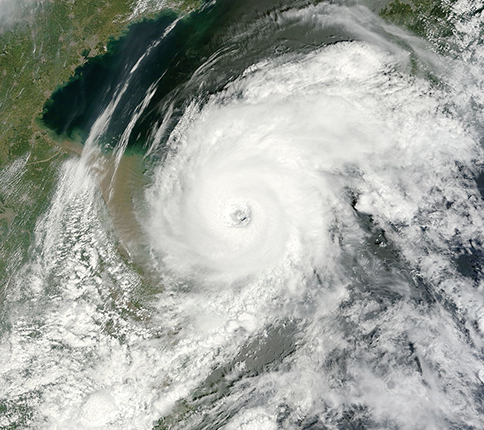How typhoons change the underwater sound field
DOI: 10.1063/PT.3.3358
A typhoon or hurricane pushes surface water before it. When the wind-driven water hits the coast, it can no longer move forward. Forced downward and backward, the surface water displaces deeper, colder water and sends it far out to sea. Because the speed of sound in seawater rises with temperature, a typhoon’s passage alters the coastal sound field. Now Guang-Bing Yang and his colleagues from the First Institute of Oceanography in Qingdao, China, have identified a second, related effect to do with seafloor sediment. On 1 August 2012, one day before Typhoon Damrey (shown here) made landfall in eastern China, the crew of the fishing boat Lulaoyu took the temperature profile of the water at a location 10 km off the coast of Qingdao. Four days later, after the typhoon had left, the Lulaoyu returned to take a second profile. When Yang and his collaborators analyzed the profiles, they found that water at the maximum depth of 32 m had risen in temperature by 5 °C. According to calculations by Yang and his collaborators, heat from the warmer water diffused through the sediment and raised the temperature there and, with it, the sound speed—by up to 15 m/s. To quantify that effect, the researchers modeled the case of a sound source positioned 1 m above the seafloor. For a distance up to 16 km from the coast and for four days after a typhoon, the warmer sediment changed the acoustic power by at least 10 dB. (G.-B. Yang et al., J. Acoust. Soc. Am. 140, EL242, 2016, doi:10.1121/1.4962343

NASA/LANCE MODIS RAPID RESPONSE TEAM





